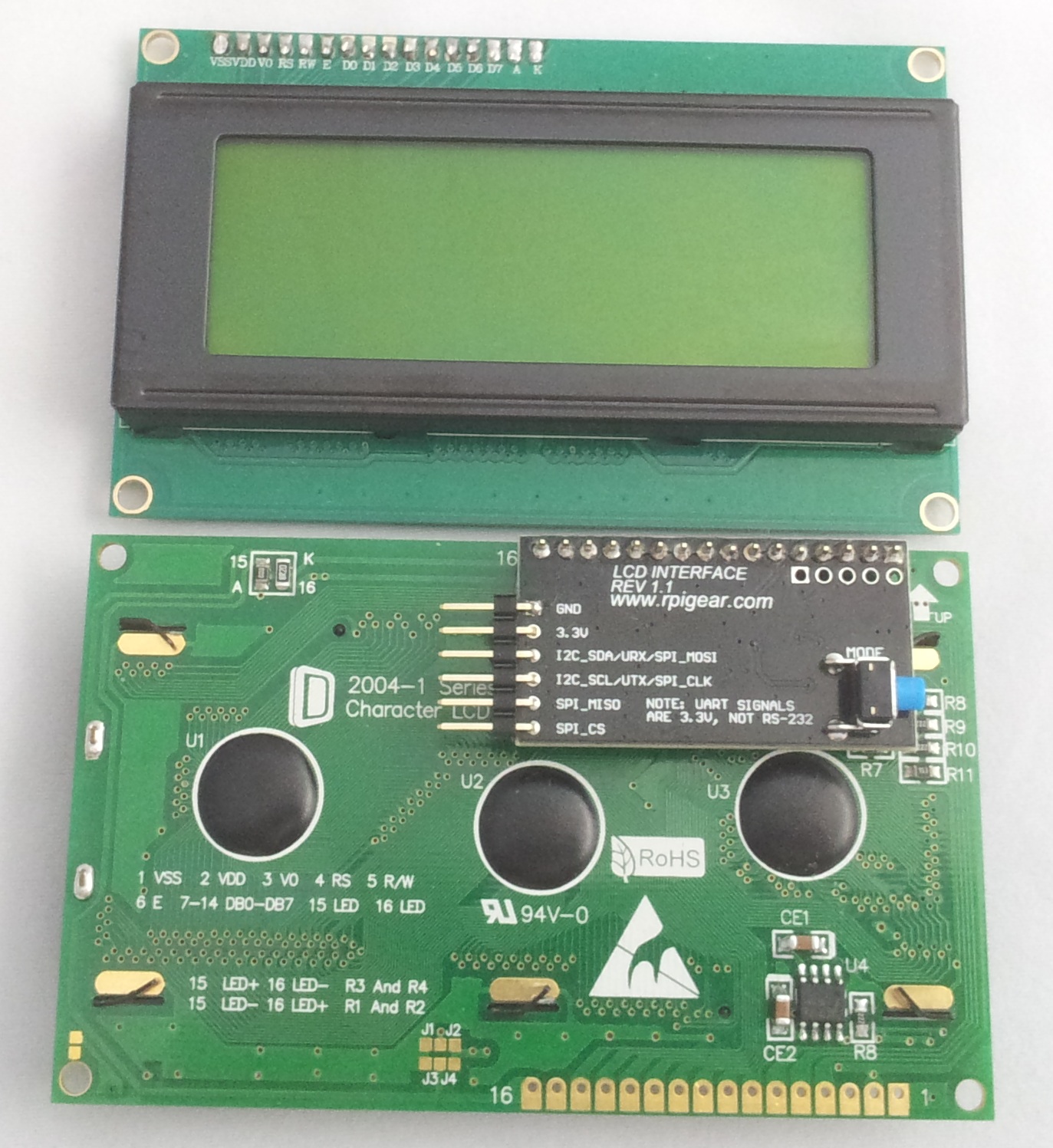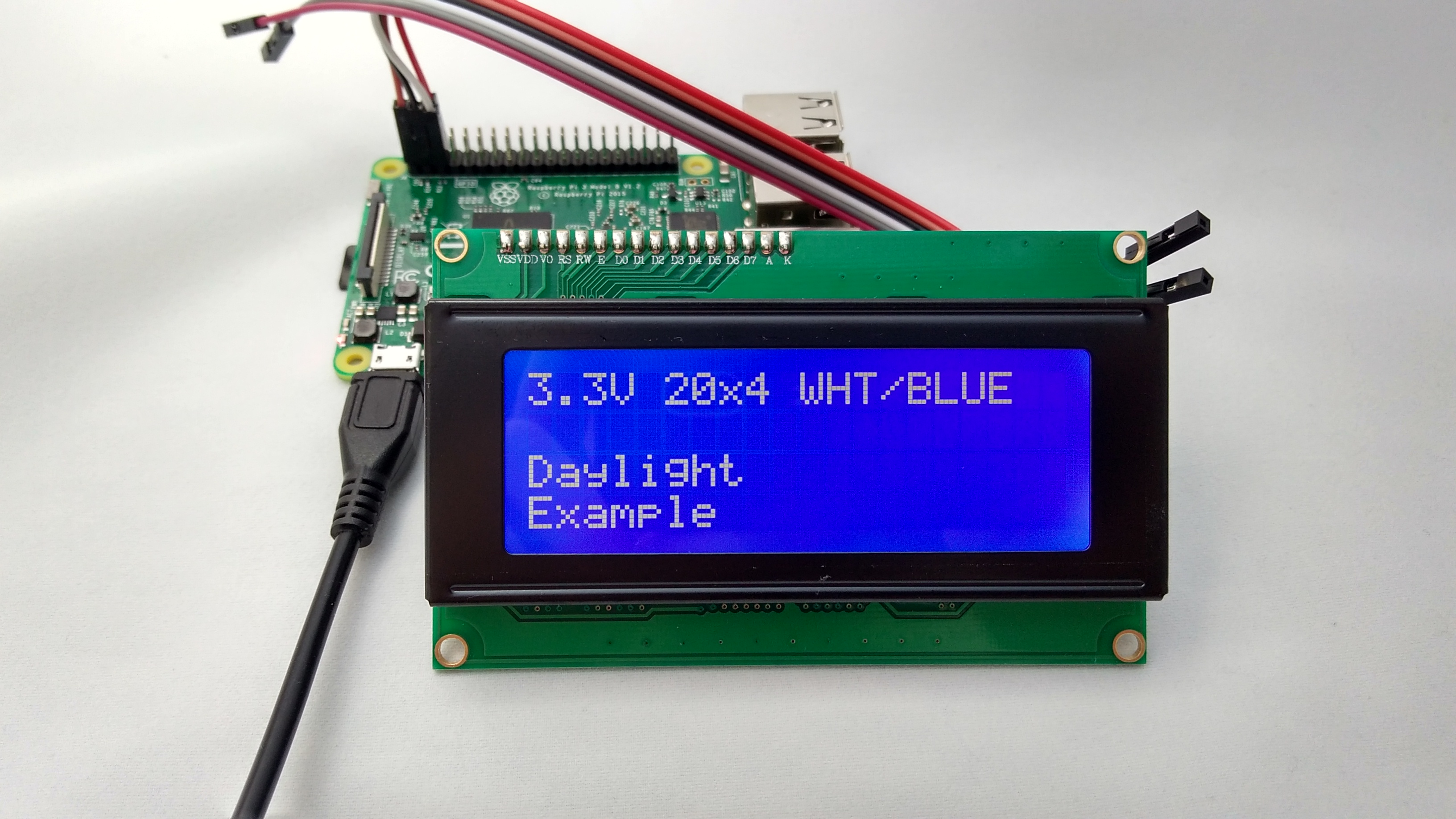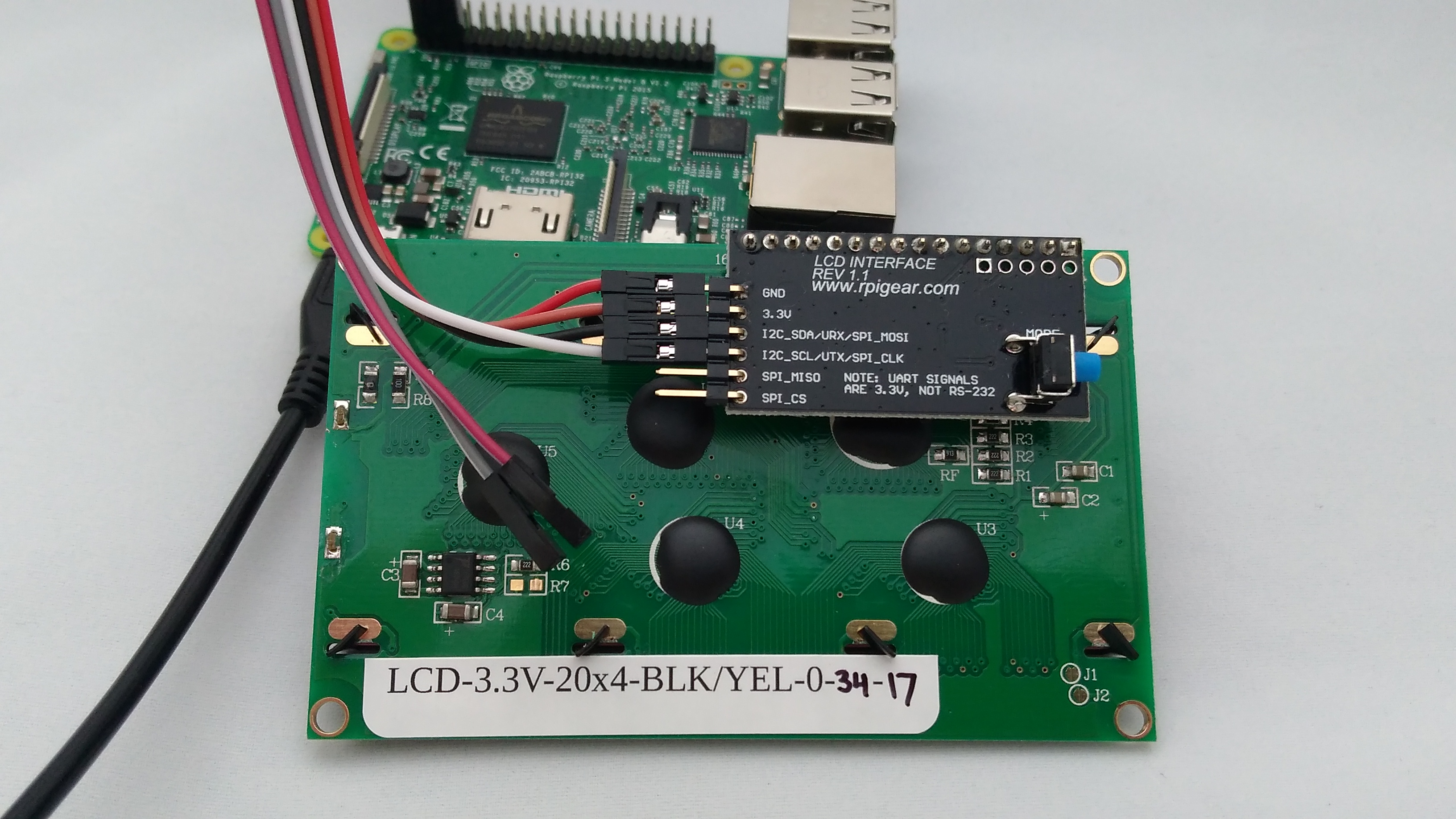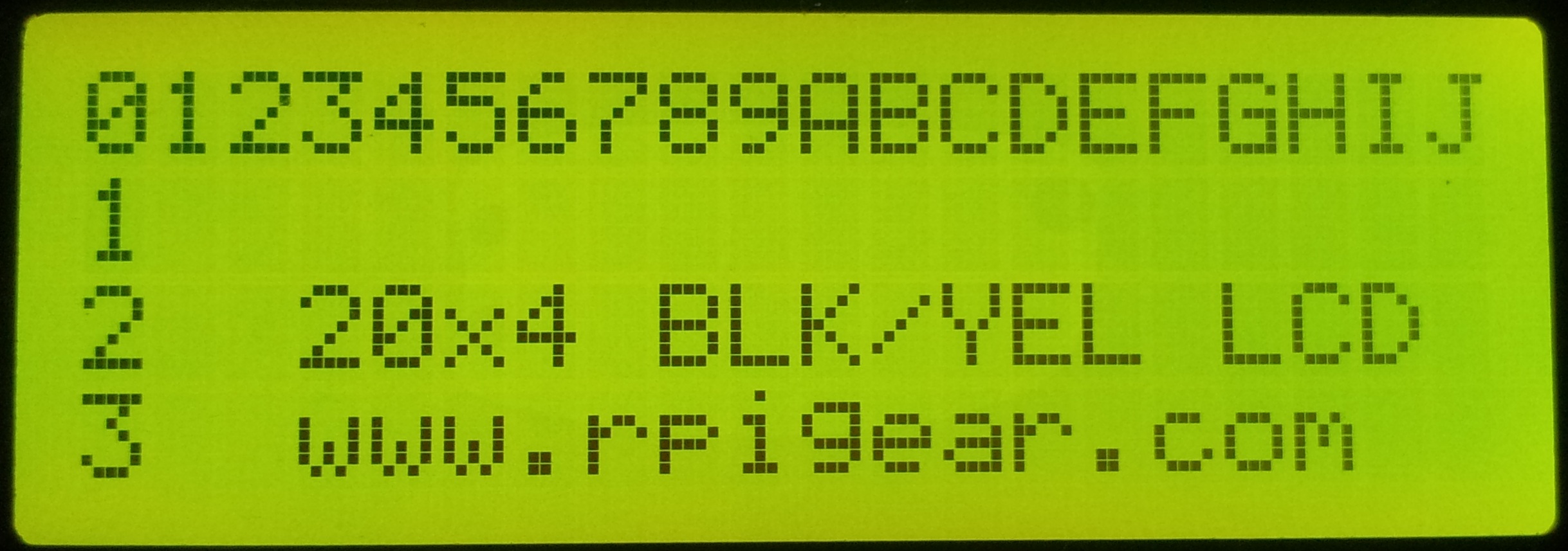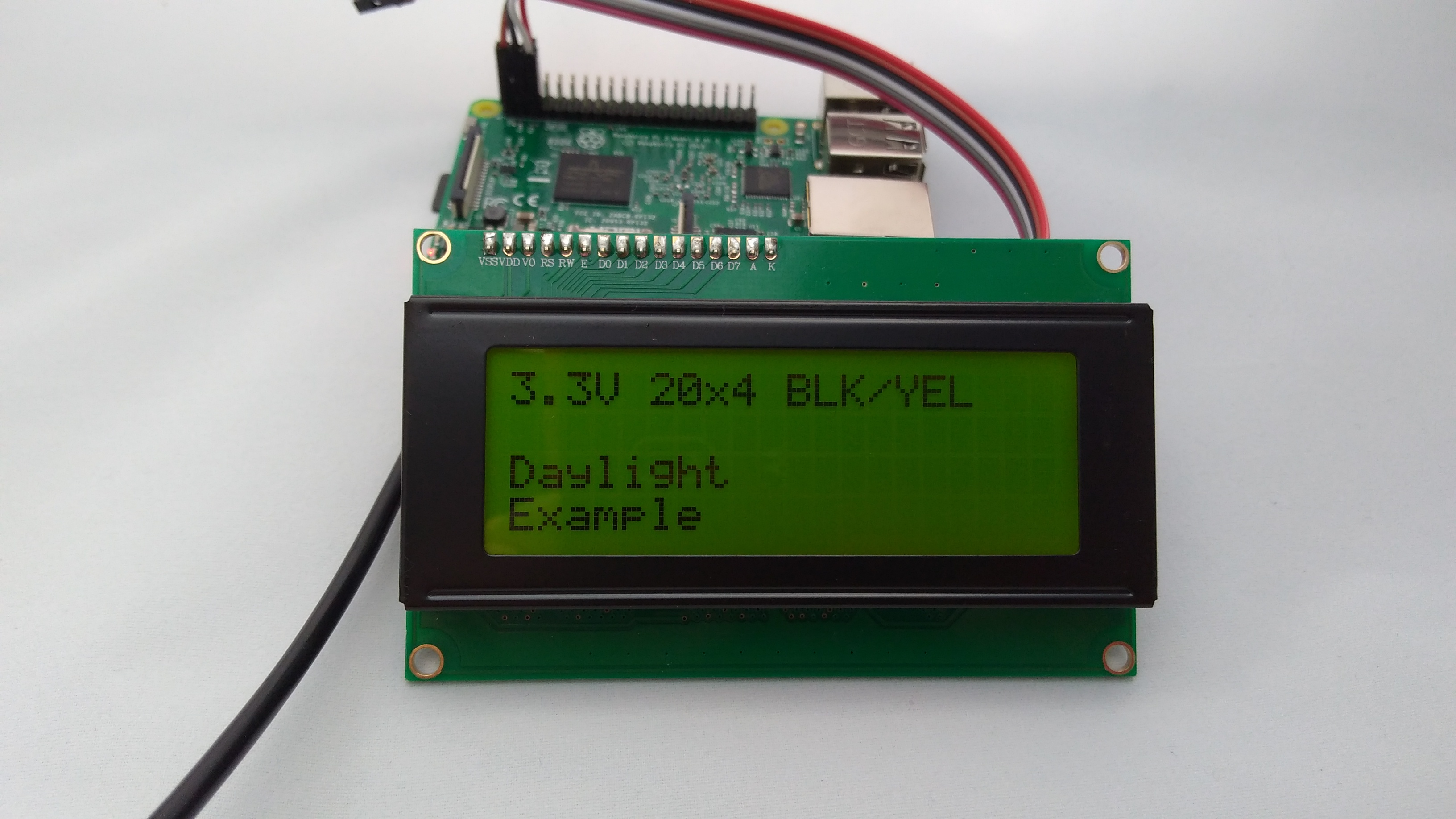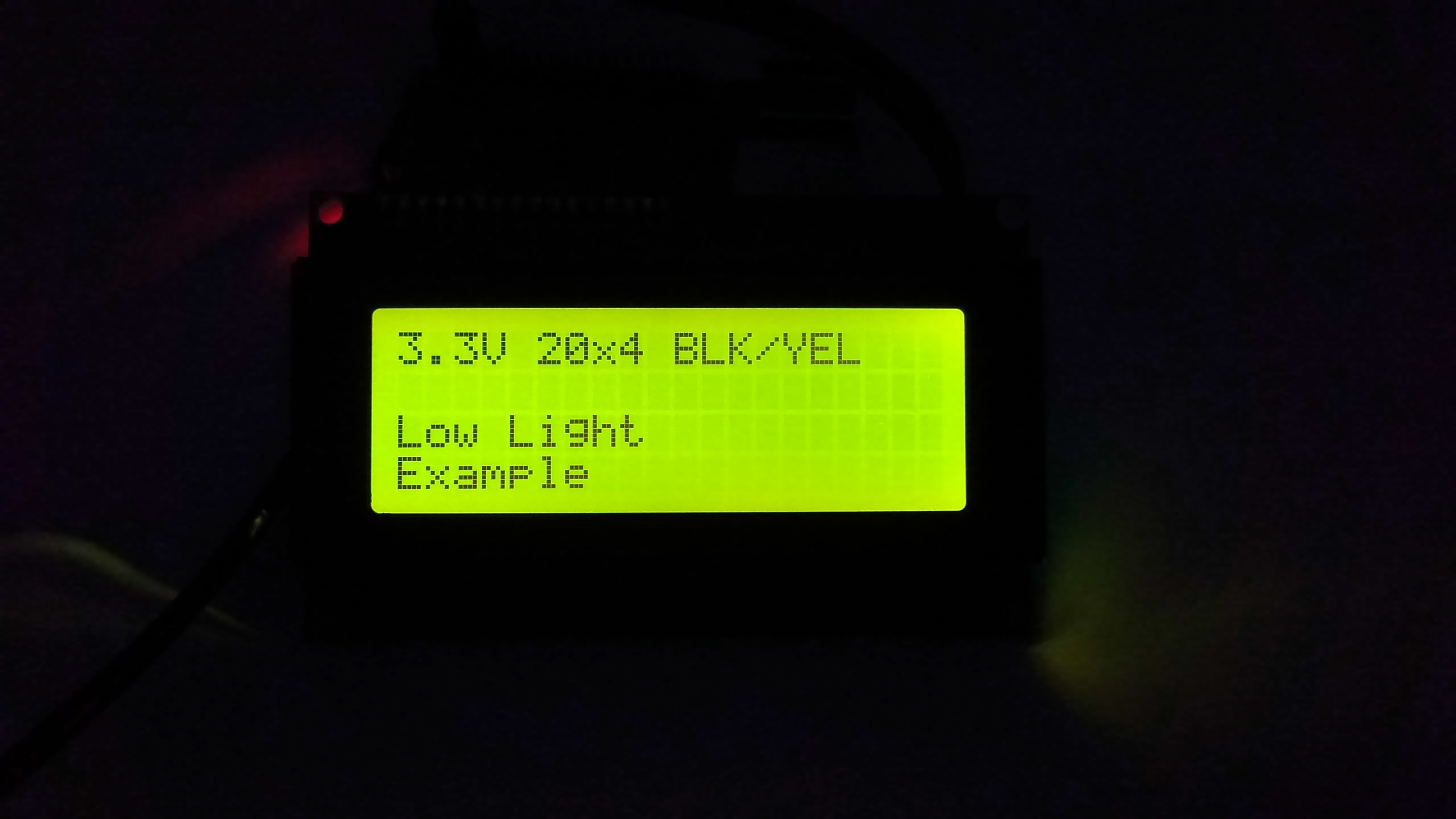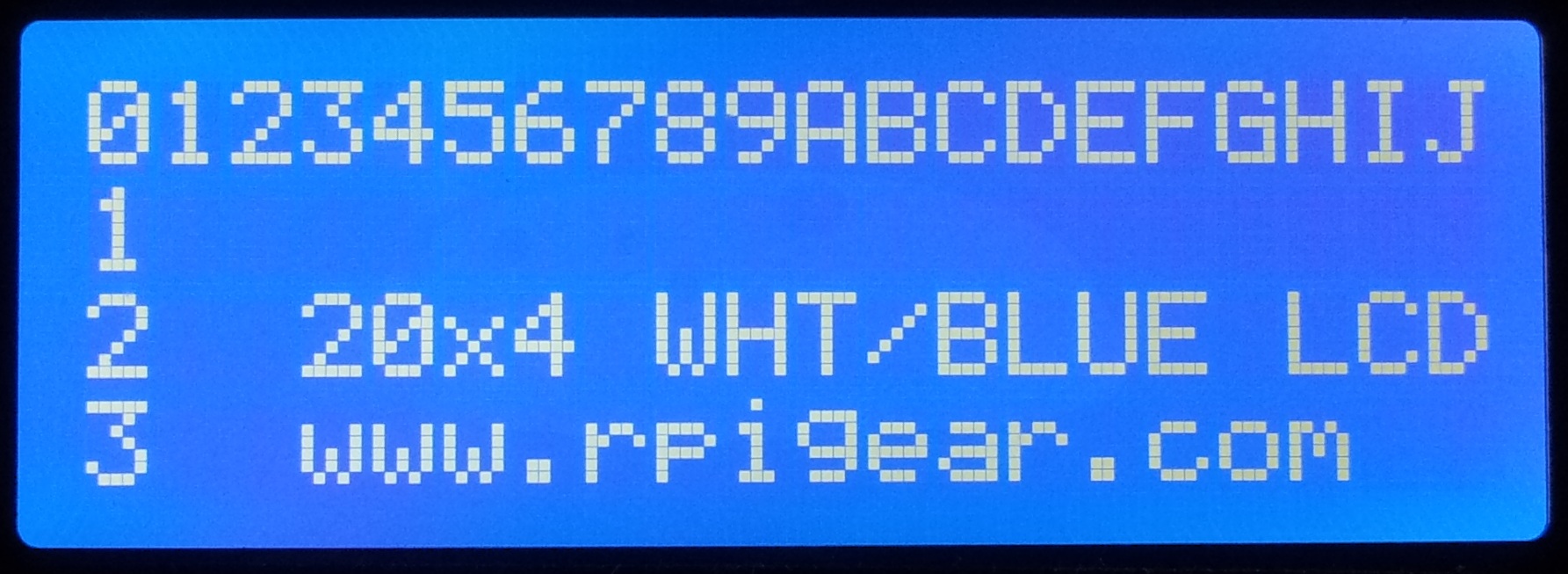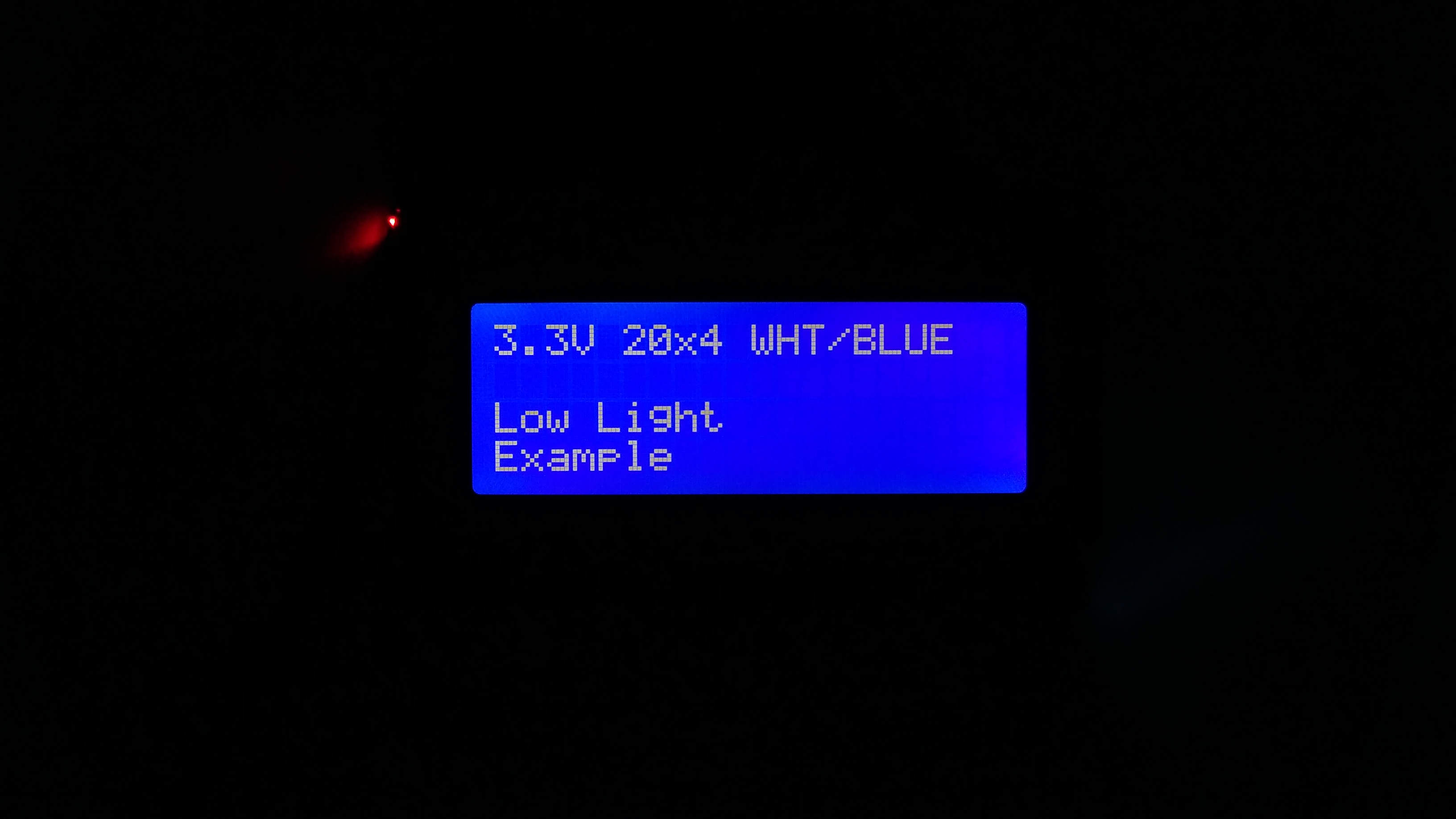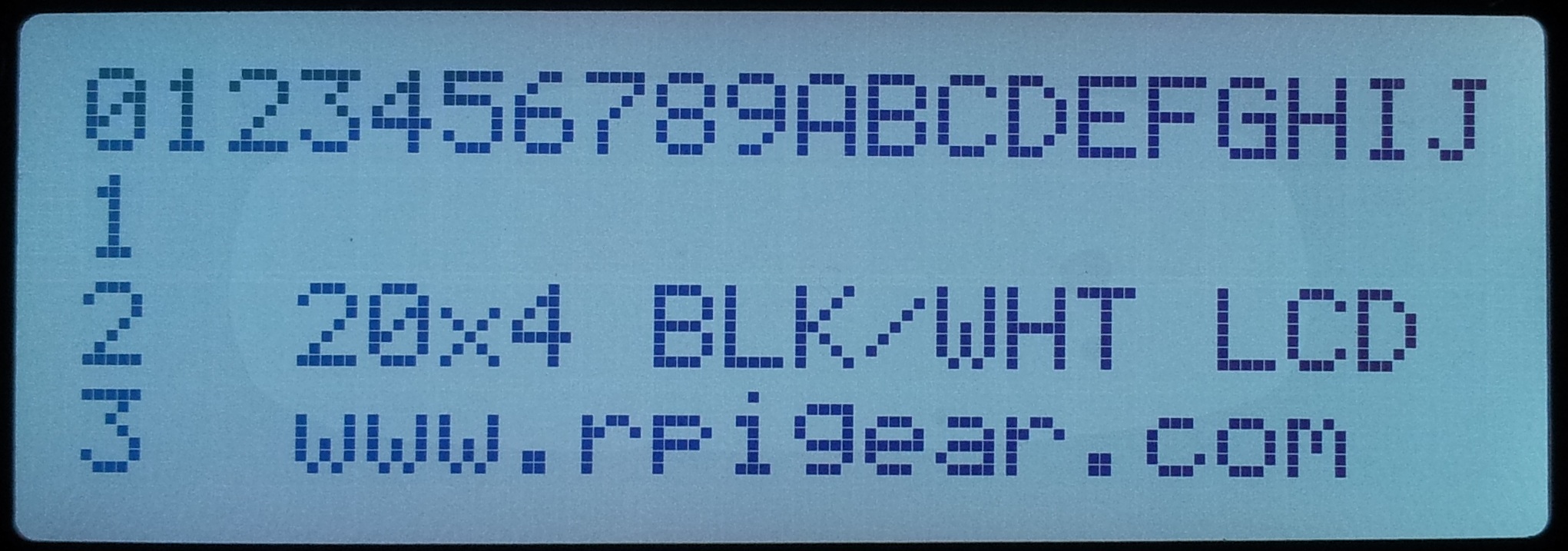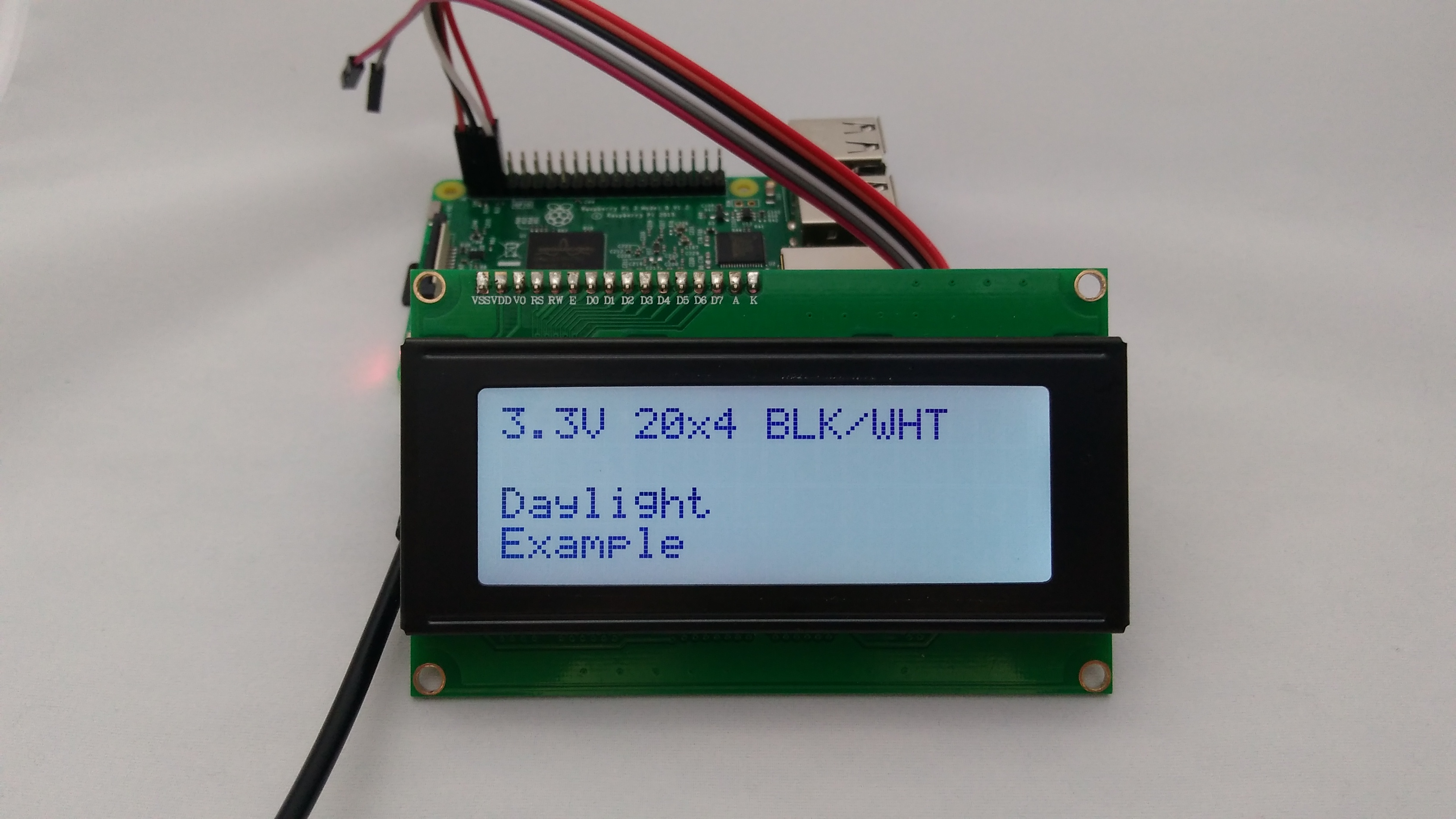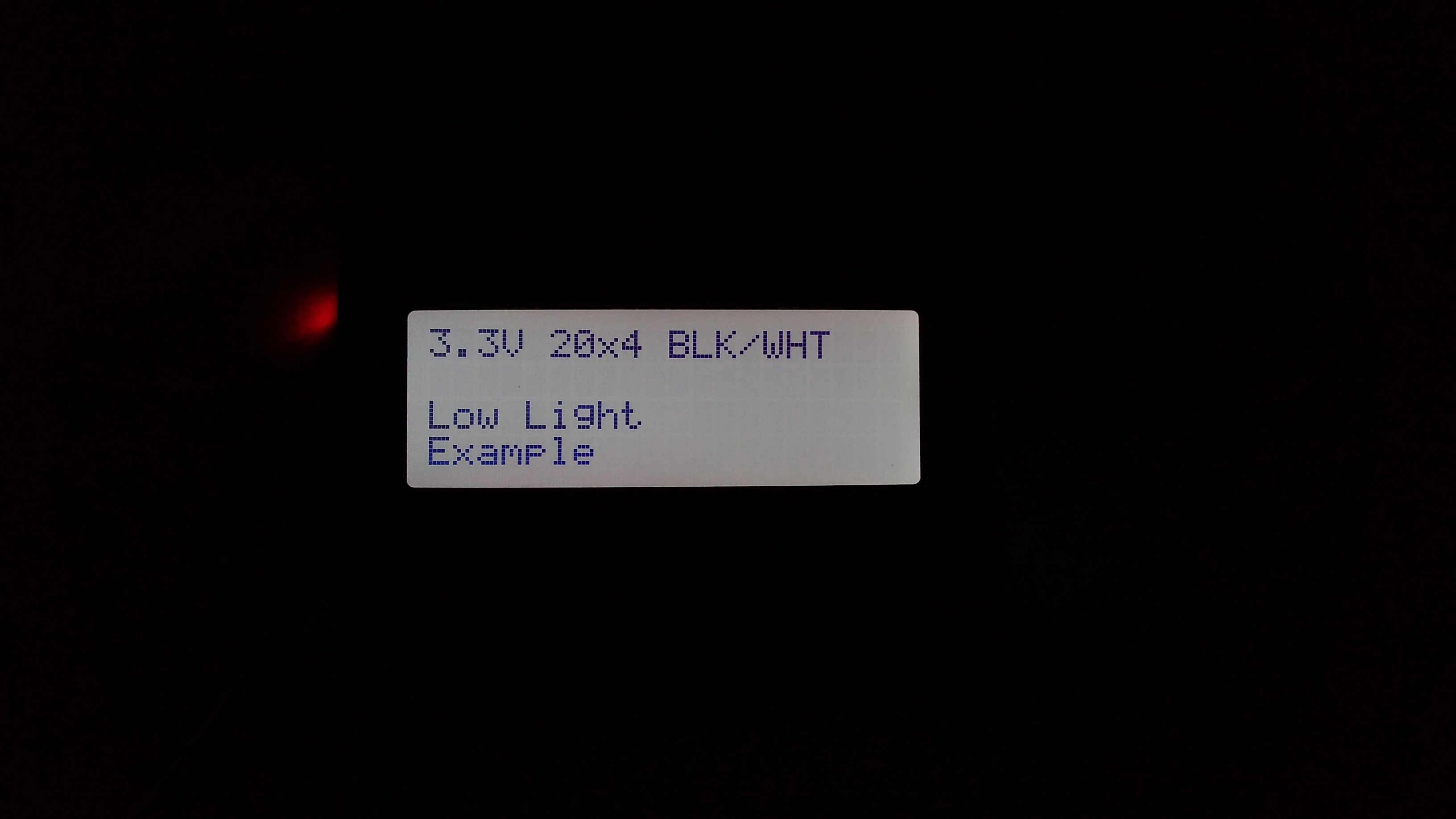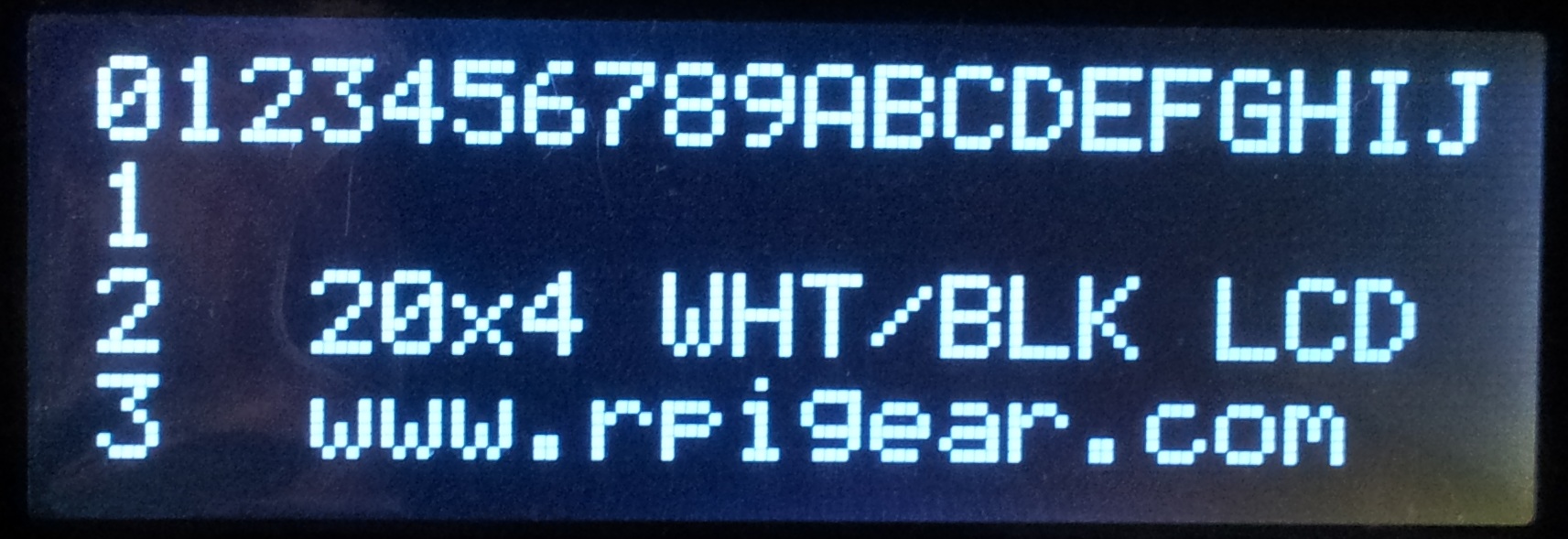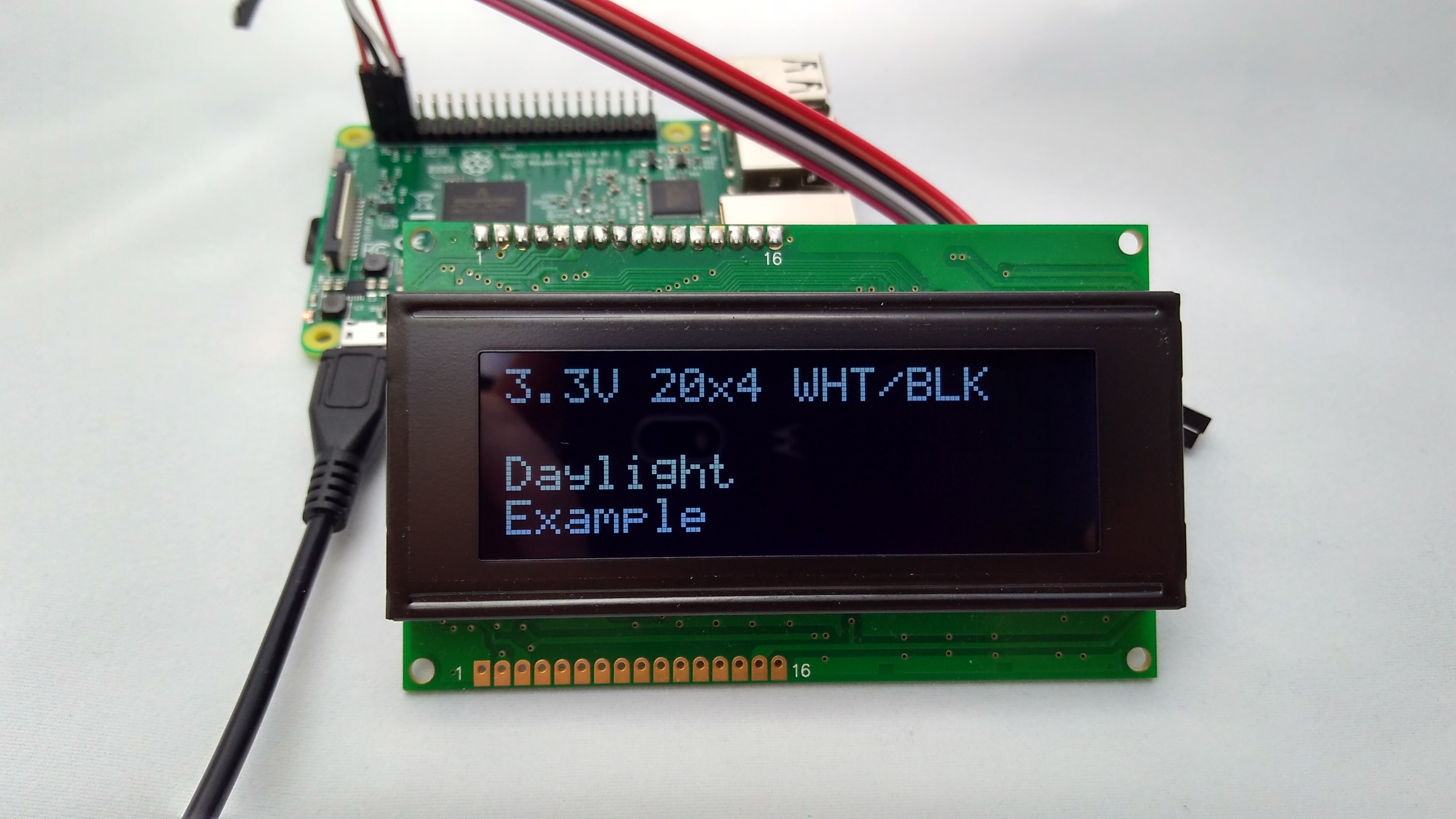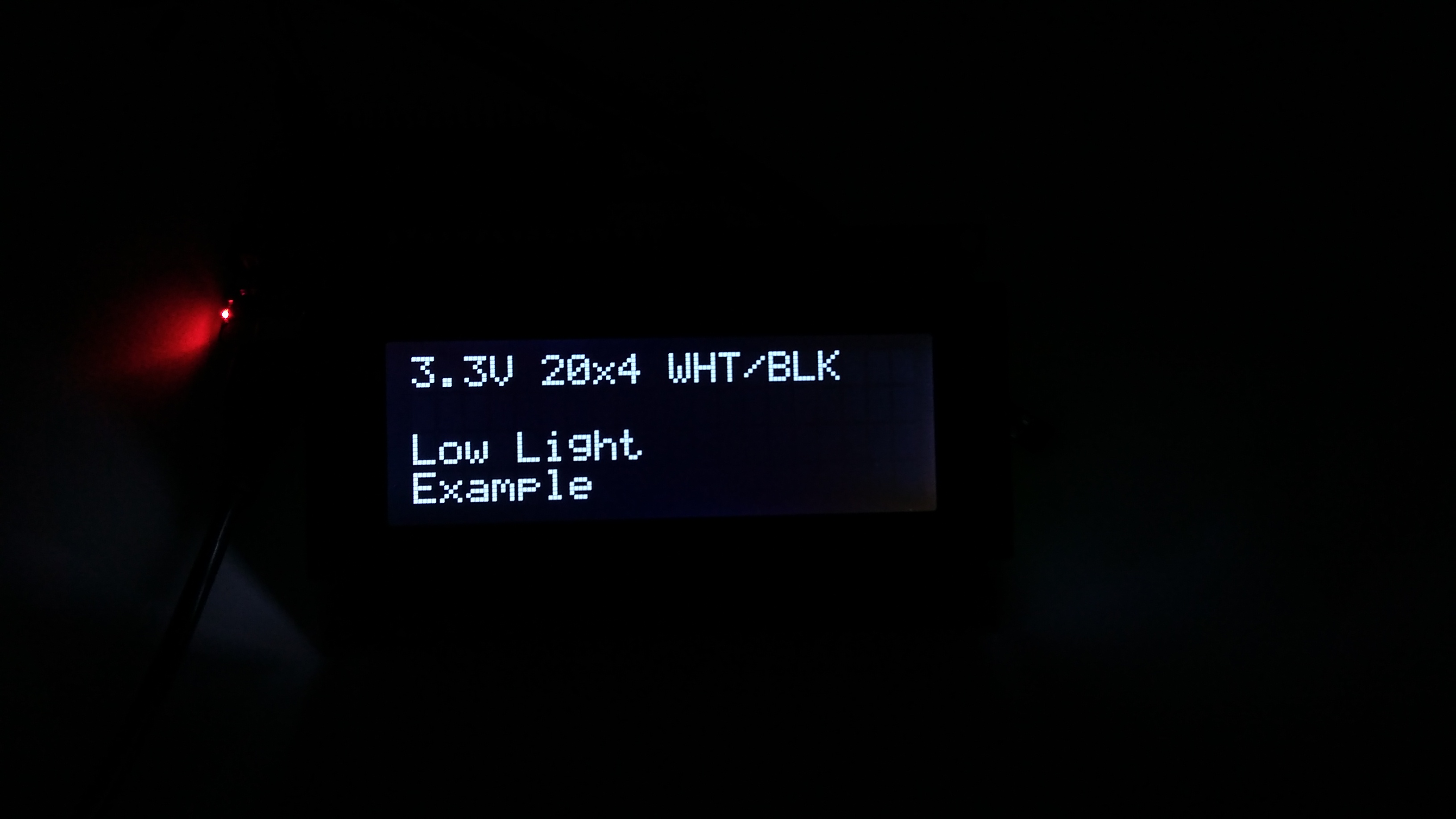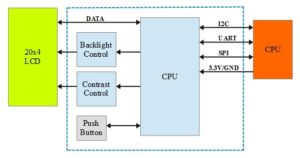Overview
This is a large 20x4 character LCD module with selectable interface modes(I2C, UART, SPI). Some of the other unique features include software control of backlight brightness as well as contrast, allowing for quick adjustments depending on ambient light conditions or user preference.
Main Features
-
Large size, 20x4 layout, comes in four colors
-
Backlight brightness and contrast controlled by software commands
-
I2C mode up to 400Khz, configurable slave address.
-
Two pin 3.3V UART mode, baud rates {9600, 19200, 38400, 57600, 115200}.
-
4-pin SPI mode, supports all 4 standard SPI modes, up to 3Mhz clock.
-
Simple command line Raspberry Pi software included
-
Source code examples for custom applications, showing how to interface with the LCD from any I2C/UART/SPI hardware.
Available Colors
Photo
Color
Size
Part Number
Daylight
Low Light
Downloads
Datasheet
User Manual
Quick Start Guide
Linux Software 1.1 1.2
Purchasing
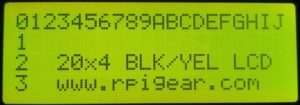
- 20x4 Black/Yellow Character LCD
- 6 fem/fem jumper wires
- Raspberry Pi not included
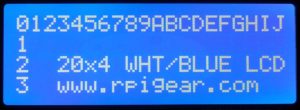
- 20x4 White/Blue Character LCD
- 6 fem/fem jumper wires
- Raspberry Pi not included
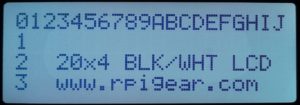
- 20x4 Black/White Character LCD
- 6 fem/fem jumper wires
- Raspberry Pi not included
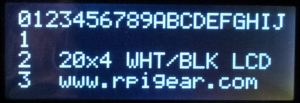
- 20x4 White/Black Character LCD
- 6 fem/fem jumper wires
- Raspberry Pi not included
FAQ
Which versions of the Raspberry Pi are supported ?
PI 1 Model A+, PI 1 Model B+, PI 2, Pi Zero, PI 3, Pi 4.
Can I connect this LCD to other hardware(besides the Raspberry Pi) ?
Yes, the LCD can be connected to anything with a uart, spi, or i2c. For 5V applications please put a 5V/3.3V buffer between the LCD and the 5V hardware, because the LCD is a 3.3V device.
I would like to write my own software, what’s the best way to get started ?
The Linux Raspberry Pi software has a folder with sample source code for the PIC16 microcontroller. There are working examples that
show how to interface with the LCD in one of i2c/spi/uart modes. Both bit banging and hardware module implementations are included.
Porting this C code to other devices involves updating some of the hardware specific functions inside system.c.
